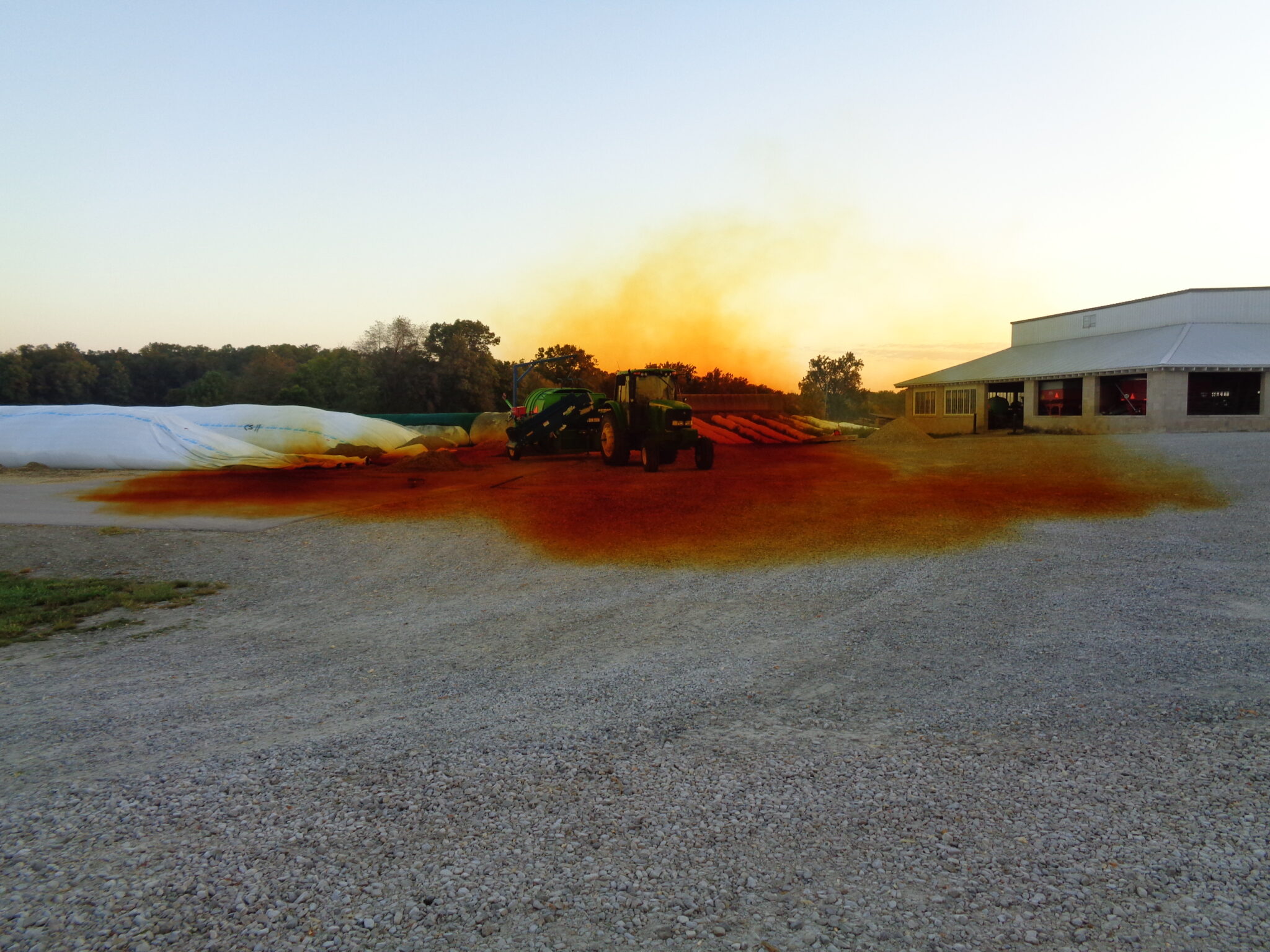Perhaps it is fitting that the eerie poisonous gas flowed from the end of a silo bag not adequately sealed at the end with a lime pile as this is “National Farm Safety and Health Week”. During the ensiling process, toxic gasses of nitrogen dioxide (N02) and nitrogen tetroxide (N204) are produced when nitric oxide comes in contact with oxygen. Nitrates that have not been converted to true protein are the source of nitrogen oxide. Nitrates accumulate in plants when drought and/or when excess nitrogen is present in the soil.

The orange, heavy, and poisonous gas, nitrogen tetroxide, flows out the end of a silage bag filled with corn chopped and bagged the previous day.
Nitrogen dioxide is colorless and nitrogen tetroxide is reddish brown. These gases have caused permanent lung damage in people; and have killed both livestock and humans. Greatest concern is the first few days after putting the chopped forage in the silo structure or bag. However, care should be taken for ten days after packing occurs. These silo gases float down a tower silo chute and into a barn or confined area. Whenever toxic gases are a possibility, care must be taken to protect both humans and animals. Make sure that enclosed areas around the feed storage area (feed rooms, silos, and animal pens) are well ventilated and safe before entry. Doors and windows to enclosed areas should be opened, and silo blowers should run before any attempt is made to enter a tower silo. If there is any doubt about toxic gases being present, a properly fitted oxygen mask should be used in and around the feed storage area.
After fermentation is complete after four weeks, it would be advised to request a nitrate test along with nutrition analyses used to balance rations. Fermentation does reduce the initial nitrate concentration at harvest. If nitrate concentration is a concern as noted by test results, seek the advice of a trained nutritionist to utilize other feedstuffs to blend with the silage to meet livestock performance goals and that will make the ration safe to feed.
The concern of toxic gasses emphasizes the importance of being safe and healthy with all farming tasks.
Much of the text is from “Beef Management Practices When Forages are in Short Supply Because of Drought” that is in the process of being made a Purdue Extension publication. Authors are Ron Lemenager, Keith Johnson and Nick Minton.


